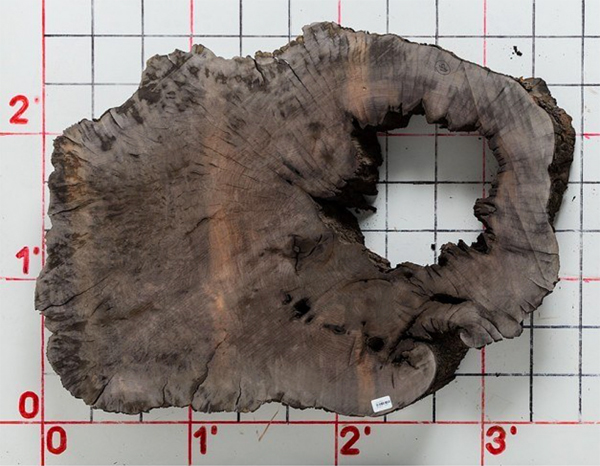
I like to turn different items on my lathe. To this end, how do I harvest a walnut burl from a 16- to 20-in. tree? It is in a group of other trees. I would prefer not to kill the tree or damage the surrounding trees. The burl is at least 30 in. in diameter and is about 21- to 23-in. deep. – Ron Mantynen
Tim Inman: Burls are like malignancies on trees. They start out as a “wart” which goes nuts and becomes a huge growth. Sometimes the inside of the burl reveals a wound or other damage that triggered the callous tissue to grow into the burl. Some trees are much more prone to growing burls than others. Redwoods grow great burls; Carpathian elm burl is classic in antique furniture. Silver maple trees grow abundantly where I live, and I have a burl from one in my grandmother’s yard that measures over 36 in. in diameter. Walnut trees grow them, too, as you know.
So, what to do? Removing a burl is like tree surgery. You’re going to cut into the living tissue of the tree when you remove it. In your case, as you describe it, the burl is actually a huge growth that is larger than the diameter of the tree. This is quite possible, but it also means that when you remove the burl you will be doing major damage to the vascular system of your tree. It is going to be hard on that tree. I would definitely recommend not cutting the burl while the tree is actively growing. I would take it off after the tree has gone completely dormant for the season. But, I would do it as soon as possible after full dormancy in order to give the tissue time to harden off. When spring comes, you will see the tree bleeding sap. Hopefully this will “self-cauterize” before the tree does itself in. But there is risk!
Finally, I’ll add this: Burls can be quite disappointing. They are often hollow inside and also often include bark inclusions besides the beautiful swirly grained wood. Getting big pieces of usable burl can be a challenge. The grain goes in all directions and some of it is very hard. Some of it is soft. Cutting it on the lathe requires a light touch and razor-sharp tools to get the surface finish you want and to avoid the appearance of ‘”chatter.” Burl is dimensionally unstable. Making a perfectly round salad bowl from burl is a project almost guaranteed to disappoint. It will not stay round. The old rule for drying wood is to allow one year per inch of thickness. Burl needs at least this much time. So if you have a 6-in.-thick burl, expect to be well into the next decade before it is ready to begin turning … not to be too discouraging. I’ve turned many things from burl and will continue to do so. Finishing burl is a pure joy.





